<< Our Photo Pages >> Carn Meini - Ancient Mine, Quarry or other Industry in Wales in Pembrokeshire
Submitted by vicky on Thursday, 01 September 2011 Page Views: 40571
Multi-periodSite Name: Carn Meini Alternative Name: Carn Menyn, CarnmenynCountry: Wales County: Pembrokeshire Type: Ancient Mine, Quarry or other Industry
Nearest Town: Newport Nearest Village: Mynachlog-Ddu
Map Ref: SN1441432482 Landranger Map Number: 145
Latitude: 51.959765N Longitude: 4.702493W
Condition:
| 5 | Perfect |
| 4 | Almost Perfect |
| 3 | Reasonable but with some damage |
| 2 | Ruined but still recognisable as an ancient site |
| 1 | Pretty much destroyed, possibly visible as crop marks |
| 0 | No data. |
| -1 | Completely destroyed |
| 5 | Superb |
| 4 | Good |
| 3 | Ordinary |
| 2 | Not Good |
| 1 | Awful |
| 0 | No data. |
| 5 | Can be driven to, probably with disabled access |
| 4 | Short walk on a footpath |
| 3 | Requiring a bit more of a walk |
| 2 | A long walk |
| 1 | In the middle of nowhere, a nightmare to find |
| 0 | No data. |
| 5 | co-ordinates taken by GPS or official recorded co-ordinates |
| 4 | co-ordinates scaled from a detailed map |
| 3 | co-ordinates scaled from a bad map |
| 2 | co-ordinates of the nearest village |
| 1 | co-ordinates of the nearest town |
| 0 | no data |
Internal Links:
External Links:
I have visited· I would like to visit
Preseli360 Serenstar DrewParsons whese001 would like to visit
Andy B: would like to visit The outcrops of rock that are the most likely source of the Stonehenge bluestones, featured in Episode Three of BBC's History of Ancient Britain
Penbron sem Anti_quarian have visited here
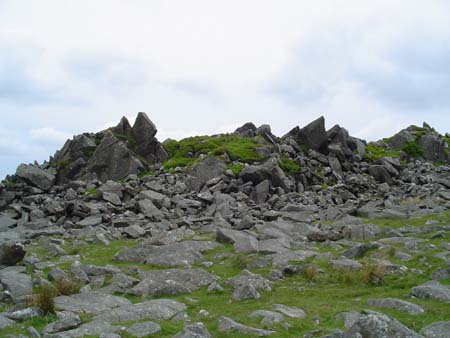
Survey work between 2002 and 2004 by the Strumble-Preseli Ancient Communities and Environment Study (SPACES) recorded an enclosure on the upper part of the outcrop consisting of a steep-sided promontory with a bank of stones across its neck. Although only around 3,500 square metres in area the enclosure contains several dolerite outcrops, each naturally fractured into shapes that could be formed into columns. Semi-worked megaliths lay scattered around apparently having been simply levered out from the larger outcrops. It is debatable whether these "semi-worked megaliths" are prehistoric or recent, since this area has been used by the farming community for at least 300 years for the collection of stone gateposts, lintels and building slabs.
Geochemical analysis has shown that some of the bluestones from the inner horseshoe at Stonehenge probably came from Carn Menyn, Carngoedog, Carnbreseb, Cerrigmarchogion and other sites in the Preseli Hills, while rhyolite fragments may have come from Carnalw and further afield.
Evidence for prehistoric and later exploitation of the stone at Carn Menyn has been found despite the site's remoteness. Two nearby chapels and many houses in the area were built from Carn Menyn stone. However, this stone was not used preferentially in megalithic or ritual structures—stone from all of the outcrops or tors on Mynydd Preseli has been used in buildings and field boundaries, so long as access by horse-drawn sleds and carts was possible.
In April 2005 an excavation at the site clarified the extent of the enclosure but did not retrieve any cultural material.
The name means "Butter Rock". It is sometimes called Carn Meini ("Rock of Stones"), but this is a modern corruption of the original name. It sits on top of the Preseli ridge, close to the stone setting of Bedd Arthur and is believed by some to have been the main source for the bluestones used at Stonehenge. It consists of an outcrop of white spotted dolerite similar to that of other tors in the area, and several other prehistoric sites have been identified nearby. The mountain-top setting provides commanding views over the Gower Peninsula and across Cardigan Bay to the Llŷn Peninsula.
Pembrokeshire had been considered the source of the bluestones since Sir Andrew Ramsey first suggested it as a contender in the mid-nineteenth century. In the early 1920s HH Thomas was able to resolve this to the Preseli Hills and in 2005 work led by Timothy Darvill and Geoff Wainwright suggested Carn Menyn as the primary quarry. This is disputed by others, and Williams-Thorpe and others from the Open University have suggested that the Stonehenge bluestones came from many different places, with Carngoedog the most likely source for the spotted dolerites.
Source: Wikipedia
Note: Darvill and Wainwright excavations find ceremonial monument earlier than the passage grave at Carn Menyn, inevitable link to the first Stonehenge made
You may be viewing yesterday's version of this page. To see the most up to date information please register for a free account.
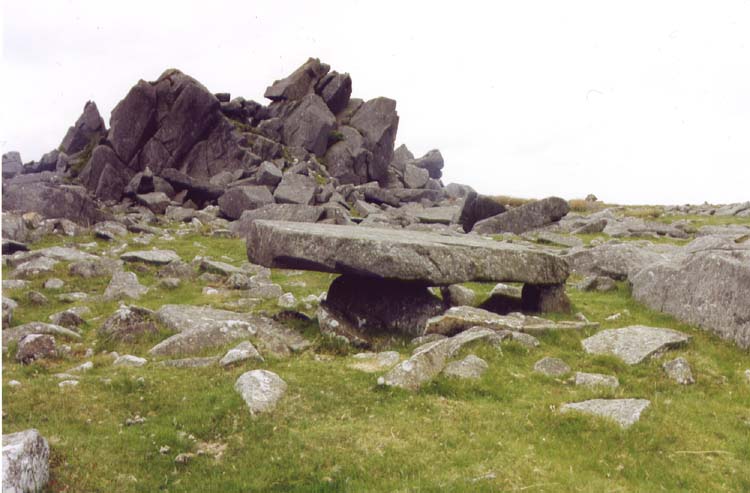
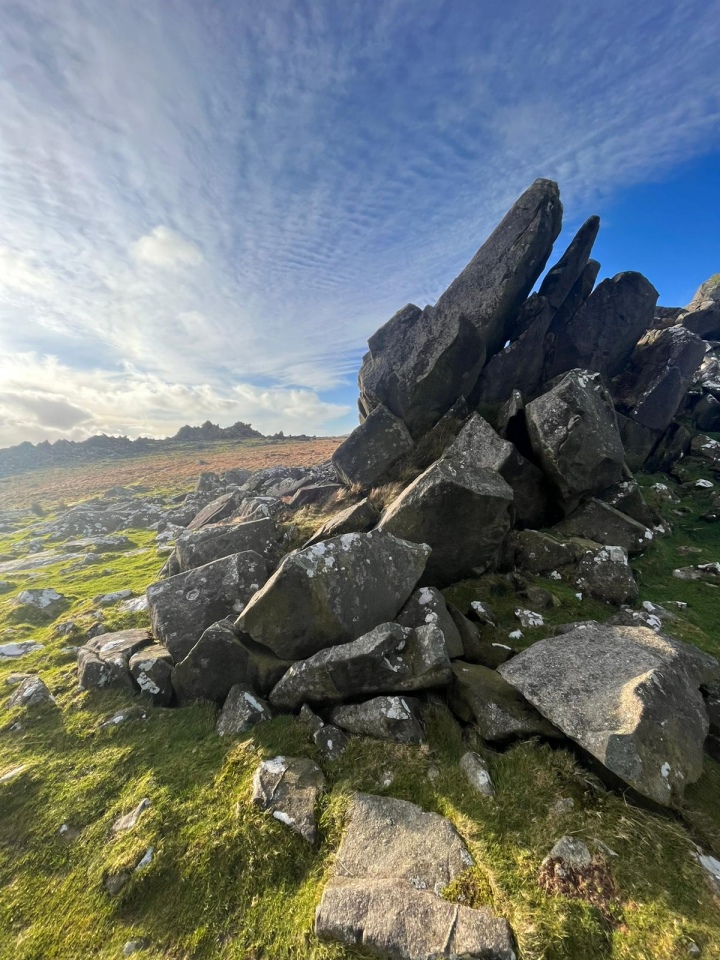
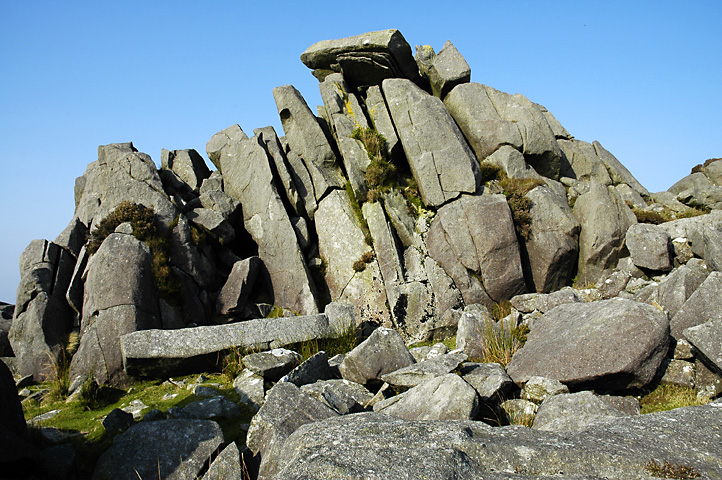
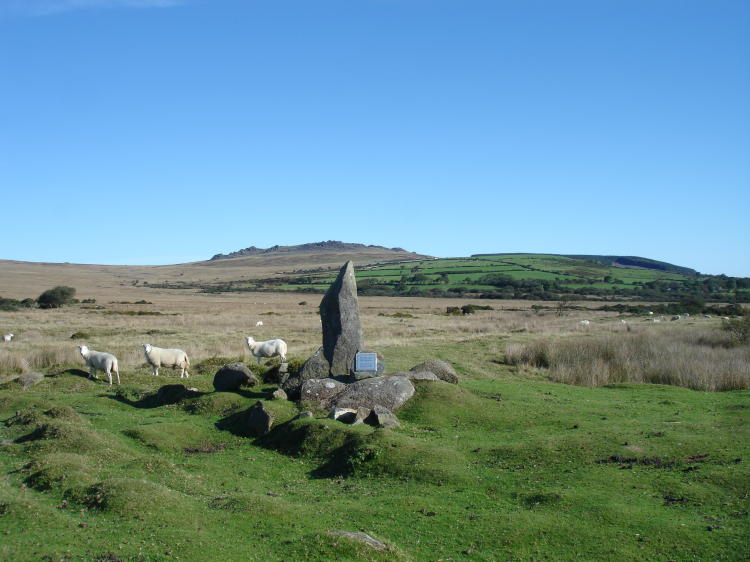
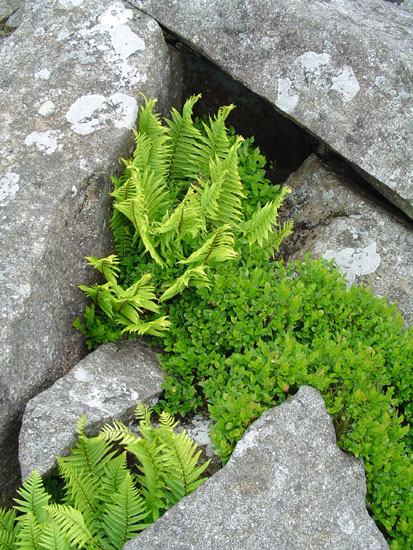
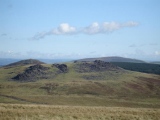
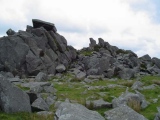
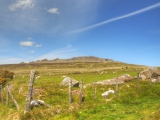
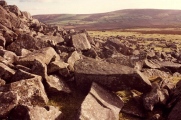
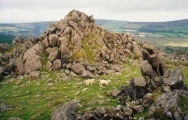
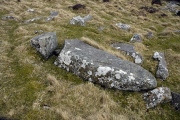

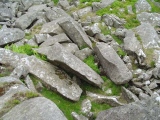
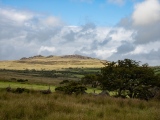
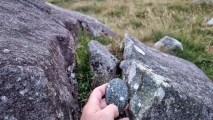
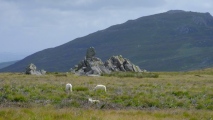
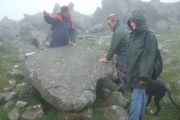
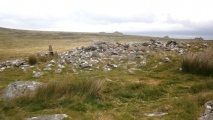
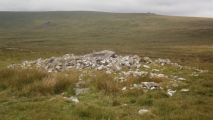
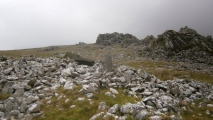
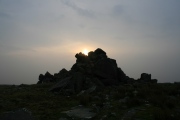

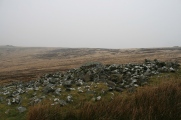
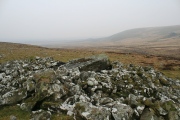
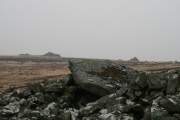
These are just the first 25 photos of Carn Meini. If you log in with a free user account you will be able to see our entire collection.
Do not use the above information on other web sites or publications without permission of the contributor.
Click here to see more info for this site
Nearby sites
Key: Red: member's photo, Blue: 3rd party photo, Yellow: other image, Green: no photo - please go there and take one, Grey: site destroyed
Download sites to:
KML (Google Earth)
GPX (GPS waypoints)
CSV (Garmin/Navman)
CSV (Excel)
To unlock full downloads you need to sign up as a Contributory Member. Otherwise downloads are limited to 50 sites.
Turn off the page maps and other distractions
Nearby sites listing. In the following links * = Image available
146m NE 34° Carngyfrwy Round Barrow(s) (SN145326)
189m WSW 253° Carn Menyn - Worked Stone* Ancient Mine, Quarry or other Industry (SN1423132432)
194m WNW 295° Carn Menyn Marker* Standing Stone (Menhir) (SN1424132570)
407m WNW 288° Carn Meini Tomb* Chambered Tomb (SN14033262)
429m WNW 284° Carn Menyn* Round Cairn (SN140326)
476m NW 318° Carn Gwr Sourthern Cairn Cairn (SN14113285)
492m W 274° Carn Breseb Pointer* Standing Stone (Menhir) (SN1392332532)
524m W 269° Stone River Stone* Standing Stone (Menhir) (SN1388832496)
534m NW 319° Carn Gwr Cairn (SN14083290)
925m S 180° Carn Menyn (Gate Post?)* Standing Stone (Menhir) (SN1438131557)
1.0km ENE 57° Carn Ferched Cairn* Round Cairn (SN153330)
1.1km WSW 254° Carn Arthur* Natural Stone / Erratic / Other Natural Feature (SN1337532232)
1.2km ENE 67° Carn Ferched Standing Stones* Standing Stones (SN155329)
1.3km NNW 335° Carn Alw* Ancient Village or Settlement (SN139337)
1.4km W 269° Bedd Arthur* Stone Circle (SN13053251)
1.5km W 265° Carn Bica* Cairn (SN129324)
1.6km ENE 69° Carn Gaseg Ring Cairn (SN159330)
1.6km SW 221° Craig Talfynedd Ancient Village or Settlement (SN133313)
1.7km NE 49° Foel Drygarn Cairns* Cairn (SN15773359)
1.8km N 9° Modern Stone Circle at Ty'r-bwlch* Modern Stone Circle etc (SN1474234210)
1.8km WNW 295° Carngoedog* Ancient Mine, Quarry or other Industry (SN1283133283)
1.8km NE 49° Foel Drygarn Fort* Hillfort (SN158336)
1.8km NE 49° Foel Drygarn Track Ancient Trackway (SN158336)
1.8km SW 233° Carn Sian Cairn* Not Known (by us) (SN1294231474)
1.8km SW 236° Carn Sian Linear feature* Stone Row / Alignment (SN1286831525)
View more nearby sites and additional images






 We would like to know more about this location. Please feel free to add a brief description and any relevant information in your own language.
We would like to know more about this location. Please feel free to add a brief description and any relevant information in your own language. Wir möchten mehr über diese Stätte erfahren. Bitte zögern Sie nicht, eine kurze Beschreibung und relevante Informationen in Deutsch hinzuzufügen.
Wir möchten mehr über diese Stätte erfahren. Bitte zögern Sie nicht, eine kurze Beschreibung und relevante Informationen in Deutsch hinzuzufügen. Nous aimerions en savoir encore un peu sur les lieux. S'il vous plaît n'hesitez pas à ajouter une courte description et tous les renseignements pertinents dans votre propre langue.
Nous aimerions en savoir encore un peu sur les lieux. S'il vous plaît n'hesitez pas à ajouter une courte description et tous les renseignements pertinents dans votre propre langue. Quisieramos informarnos un poco más de las lugares. No dude en añadir una breve descripción y otros datos relevantes en su propio idioma.
Quisieramos informarnos un poco más de las lugares. No dude en añadir una breve descripción y otros datos relevantes en su propio idioma.